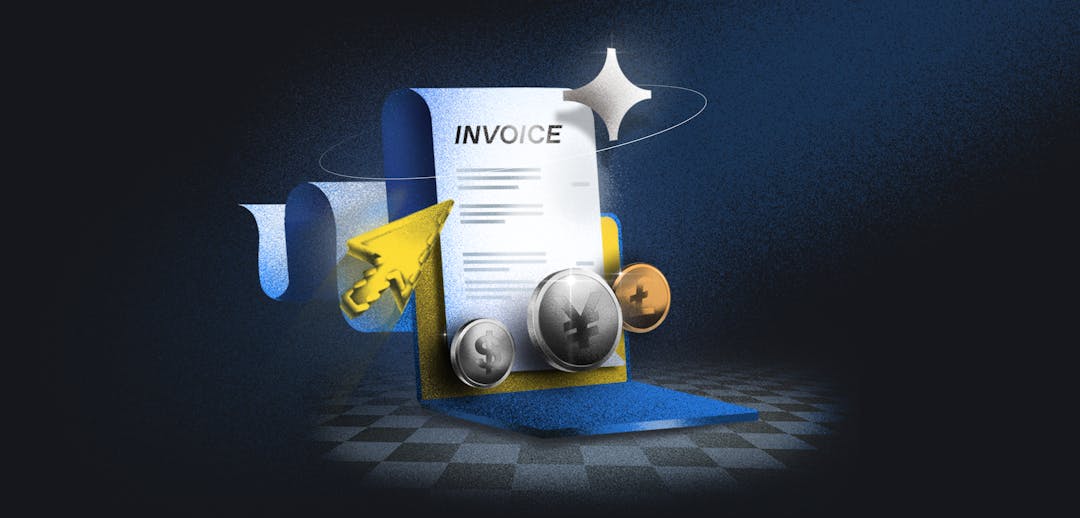When launching a new software product, you can often get stuck by the number of jobs you need to complete for a successful launch. So for this post, we’re here to break it down by highlighting the three key areas you should concentrate on.
1. Choose the best billing software
Having a new product launch is the perfect time to examine your billing model to see whether it’s offering the best value to your customers. Should you be providing more than one billing model? A one-off model simplifies the process, whereas a hybrid model of one-off/subscriptions could promote longevity and growth. You could also make the jump to just offering subscriptions (something which we touch upon in the next section).
The first step to deciding will be honing in on the customer personas you may or may not have already created. Buyer personas are outlines of the ideal customer that your customer support team collected from talking to your actual customers, doing research around potential prospects, and identifying potential new audiences you’d target. Customer feedback and other info you gather will be vital to find out which billing model aligns with what your customers want. Are they needing a functional one-off product or is there potential for a tier to pay more for additional features and updates?
Tip: Market research and customer personas help to define what your customers value in your product and where you can expand from their needs.
2. Consider a subscription pricing model
You may be considering a hybrid model incorporating subscriptions or switching to subscriptions entirely. The commonality is that by having an element of a subscription model, you can give yourself more freedom from the typical launch sales spike and fall and cultivate a steady income stream from multiple customers using your service with monthly or yearly subscriptions.
From the customers' perspective, you entice them with a lower-priced product that continually offers updates and new features for them, coupled with the flexibility of paying yearly or monthly. They may also have the added benefit of wanting to use your software over multiple platforms and wouldn't want to pay multiple times to do so. It’s for these benefits that customers would invest in your subscription model.
Tip: Subscriptions have many benefits but will only work if your customers can see the repeat value in your product.
3. Optimize with pricing
Pricing can be a key differentiator between you and the competition. Price yourself low, and your margins could suffer, and cheapen your brand, essentially making your product a commodity. Choose competitive pricing for your new software, and you'll only be adjusting to your competitor's margins.
Pricing ultimately comes down to how much you think people value your product (if you’re in the B2B space it's how much return of investment they’re receiving). Would they justify an increase in price to themselves or believe your product offering needs to be more substantial?
Customer personas should be brought out again with the goal of assessing what people value most within the software, particularly if a specific tier is willing to pay more. This can take the form of a chart listing the features as essential features, differentiator features, add-on features or fruitless features. Let’s discuss how they differ:
Essential features: Rank these as core features for the customer, but there’s a low willingness to pay more money for them because they perceive this as the heart of your product.
Differentiator features: These features are integral to separating what people see as the core product and what they’d pay extra for in a pro tier. You can characterize these features by a high value and high willingness to pay; they help push the uniqueness of your product and the reason for a higher price.
Add-ons features: Features that a specific set of end users want and are willing to pay to acquire. There’s less demand, but these features could be packaged as add-ons and priced separately to target the niche.
Fruitless features: Customers attach no value to these features and wouldn’t, so they add no value to the product and should get dropped in favor of more popular features.
To conduct the test yourself, use this pricing survey as a template to find out what questions your marketing team should be asking to get to the facts of what people want.
Tip: Value is all about how you price yourself. It's a combination of experimentation, research, and industry direction that you can be more knowledgeable about whether your customers would pay more.
4. Generate demand from your audience
Having a great product that is well priced and offers value to customers is a great foundation. What fundamentally decides success is awareness of your product and whether people can be persuaded to purchase it.
Planning a marketing campaign that manages to inform and entertain your potential audience will be key to a successful software launch. If you have an existing audience reach out to them through your newsletter with feature teasers and special offers. The importance is rewarding existing customers for buying your previous products, ensuring their goodwill toward your new products.
If you need to build an audience from scratch, create multiple posts on social media about your product, highlighting the visuals through screenshots. Choosing the right social platform for this is key to reaching the right audience. Your software might lean more toward a B2B focus, be dependent on a social community, or could have more of a sole visual focus.
Tip: Involve your audience with a teaser campaign, building up anticipation for the product by showing off its features and what they can do with the product. Your platform choice also has importance to the audience you’ll reach.
5. Consider other promotional channels
Social media should be the baseline for promoting your software launch. But, considering the number of communication channels available to make people aware of your release, you’d be missing out on valuable customers if you neglected them.
Online ads
Let’s start with online ads, which are an opportunity to reach people who are already searching for terms related to your product. One form they can take is pay-per-click ads where you bid on the keywords that people are searching to offer them bite-size pitches of your product for them to click onto your site.
Social media (re)targeting
You can also employ social ads targeting people from their social media feed. Customizing your target audience can also be more granular, be it a specific demographic or interests relating to your product. Retargeting can also be a part of your software launch strategy, i.e., sending ads to people that have visited your site but have not completed a purchase.
Email marketing
For your software launch to reach people on a regular basis, it's important that you cultivate an email list of existing fans and potential customers. This also allows you to speak directly to your audience, keeping them informed of product developments and offers. You can build up this list through your content offerings, giving them value in return for their email address.
Content marketing
These content offerings can come in the form of blogs, catered to your audience’s questions about the product, its development progress, or your thoughts about the industry. A solid content marketing strategy will open opportunities to inform potential customers about what makes your product unique, your story and how they can optimize their use of your new software. Make sure that these posts are illustrated with screenshots of the product or what it can produce to engage readers visually as well as through your words. Table Plus, the native tool for database management, offers blogs on how its product can increase your productivity, illustrated with gif screenshots.
Influencer marketing
If your product has a more niche appeal and a localized audience, then events should be a consideration for engaging people around the launch. Experts or influencers in your field could be enlisted for a discussion on industry topics, pointing toward how your solution offers more. Events allow you to build a brand while your product is top of mind for attendees. MacPaw held an event last year looking at "Life Outside the Mac App Store," a topic that would interest its target audience.
Tip: The messaging for these channels will differ considerably for a B2B versus a B2C product, and the key thing is to have an awareness of where your audience will want to see that message. A B2C audience might prefer being targeted through social ads on Facebook, though this can still be valuable for a B2B audience if you find their preferred platforms, such as LinkedIn or Twitter.
Software launch FAQs
How to launch software?
Here’s a product launch checklist with key steps of the new product release process:
- Conduct market research
- Create product roadmap and launch plan
- Define value proposition
- Build a go-to-market strategy
- Develop a marketing plan
- Set the launch date
- Create promotional content and press releases
- Perform pre-launch tests
- Conduct post-launch evaluation
What is a product launch plan?
A product launch plan is an official document that specifies all activities, due dates, goals, and team members’ roles and responsibilities regarding the release of the new product.
How do you announce a software launch?
A smart announcement is a secret ingredient to a successful product launch. The sales team should work on building suspense via multiple channels and announce the release date along with images, guides, and key product details.






